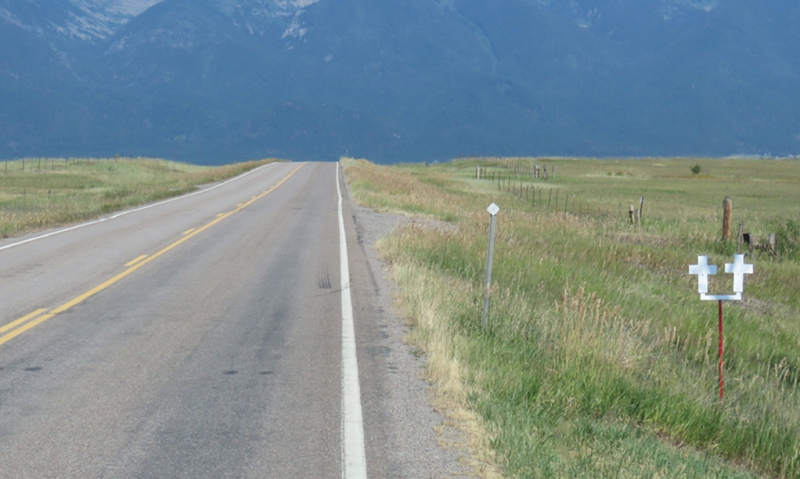
Department Spotlight: Montana reminds motorists to drive carefully
Editor’s note: This is a weekly series of Department Spotlight stories featuring unique programs and initiatives of departments throughout The American Legion. Department adjutants are invited to recommend subjects for their departments by emailing magazine@legion.org
More than 2,000 white crosses mounted to red posts adorn the highways throughout Montana. The crosses signify the locations of fatal vehicle accidents and serve as a reminder to motorists to slow down and pay close attention.
The American Legion Department of Montana launched the White Marker Highway Fatality program 63 years ago after Hellgate Post 27 member Floyd Eaheart became troubled by six vehicle casualties that occurred in the Missoula area over Labor Day weekend in 1952. The program was adopted the following year by Legion posts statewide and by the Montana Highway Commission. In 2007, it was renamed to the Highway Fatality Marker program.
“Throughout the years many people have put a lot of time and a lot of work into this program, and it is something that we are doing for the community and that is what The American Legion is about,” said John Kougioulis, the Montana White Marker chairman and a member of Post 42 in Townsend, Mont. “This is something that helps the community."
Legion posts participating in the program are responsible for furnishing, installing and maintaining the appearance of the white crosses at accident fatality sites within their respective communities. Instructions on how to create and meet specifications for the markers are provided to posts, along with installation instructions. Markers are removed when highway construction occurs to fix what may have been the cause of a fatal accident, but they are replaced if requested by a family member of the deceased.
"It's a fantastic program," Kougioulis said. "When you go down the road and you see a fatality marker, in your mind you know you need to slow down, and you need to pay attention because someone died here. A lot of people like that (reminder) about the program.”
Blue and white signs that highlight the program and the Legion's involvement appear on 25 highway entrances into Montana.
"The idea that you're helping is what The American legion is all about," Kougioulis. "This is one program that will stick around a long time if people just take the time to take care of the fatality markers that are in their post area. It’s something The American Legion can be proud of."
